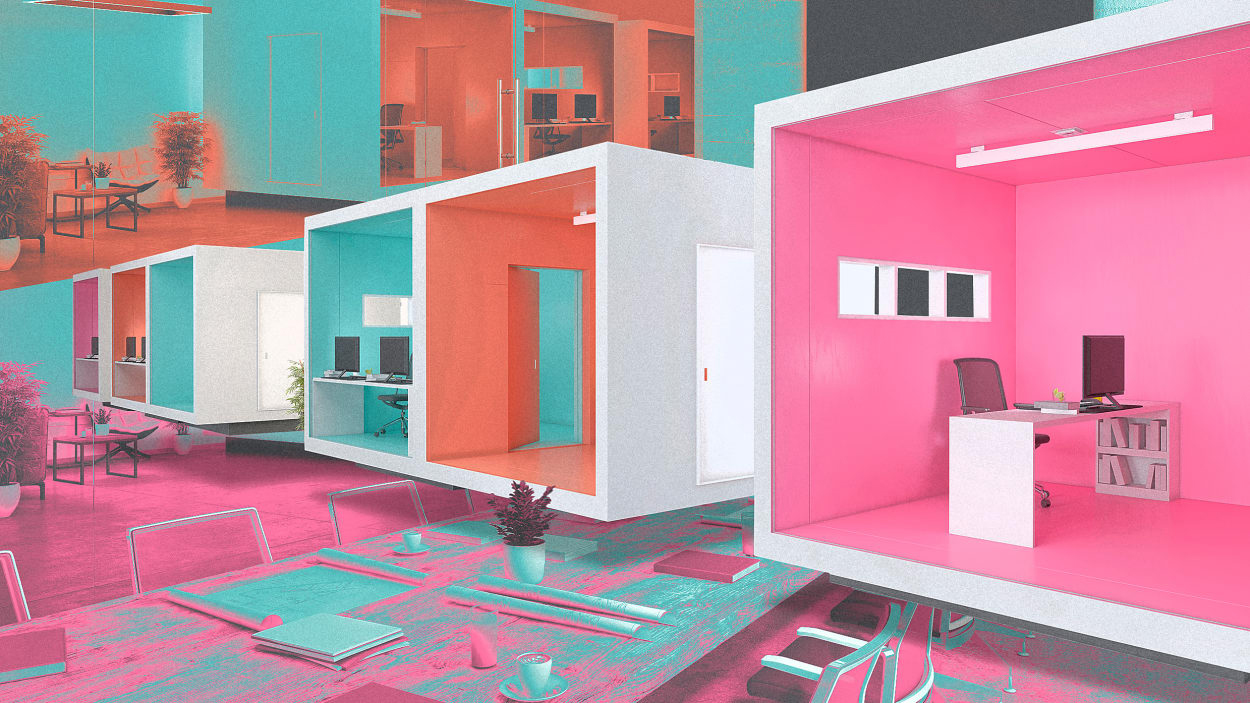Inside the post-pandemic office: More stairs, better acoustics, and ... WiggleRooms?
Furniture maker KI surveyed architects, designers, and companies and found that many want a more diverse array of workstations and an emphasis on reducing stress.
By Nate Berg
When COVID-19 drained offices around the world, many wondered if we were facing the end of the office. Now as the pandemic evolves from a hurricane to a steady storm, people are returning to work and these questions are dissipating. That led global office furniture maker KI to ask a lingering question: As people return to the office, what kind of office furniture will they actually need?
To get a sense of how the office environment will change, the company surveyed more than 400 architects, designers, and businesses across the U.S., gauging their workplace priorities in the hybrid office era. The biggest trend the survey revealed is a move toward offices with a diversity of workspaces. Two-thirds of respondents listed their top concern as creating a workplace that supports a variety of work styles.
Jonathan Webb, director of workplace markets at KI, led this research, and he says the trend is playing out in a variety of ways: where workers work, how desk space is partitioned, and how companies think about their outdoor space. In the survey, architects and designers reported receiving more requests to create areas that enable work away from a traditional desk, and even to eliminate dedicated desks and workstations.
Webb says that before the pandemic more than 90% of KI’s clients had a one-to-one ratio of desks to full-time employees. That’s all changed. “Organizations have learned to be more flexible in their approach,” he says.
It’s also changed the type of furniture KI sells. The company has developed new products to accommodate the ways offices are being used now, including the WiggleRoom SS, a stand-alone prebuilt room measuring from 6 to 10 feet on each side that can be placed within an office environment to enable small teams to collaborate or individuals to have a quiet moment alone.
Survey respondents also suggested that increasing the diversity of workspaces doesn’t mean just replacing cubicles with couches and coffee tables. It also requires designing spaces for different types of workers and work styles.
Webb says some companies are designing spaces specifically for introverts, with simple structures that can be moved around workstations when people want or need to be left alone. Others are designing spaces with neurodiversity in mind, with an increased emphasis on acoustic treatments that reduce noise and small private rooms for people who are sensitive to light and sound. More companies are also taking advantage of outdoor space as both respite and areas for informal meetings.
“We can really empower employees to control the immediate environment around them,” Webb says. “There’s been a shift from wellness to overall well-being.”
To better reflect the varied needs of their workforces, companies are increasingly designing around who their workers are and not the just roles they’re expected to perform. Some, like the manufacturing technology company Augury, are designing their offices around a set of “personas” that will be using the space. “Everybody is an individual, and everybody has their own things that they’re going through,” Webb says.
Active workspaces are also a top priority for companies and designers. That’s leading to more offices with height-adjustable workspaces and other spatial designs that discourage long hours sitting in chairs. “It can be as simple as designing and placing staircases in areas that are well seen, and using signage to promote their usage over elevator usage,” Webb says.
Other trends in the survey include the growing focus on wellness in the office environment. Nearly 40% of respondents said that encouraging wellness was a goal of their office designs, up from 25% in the company’s 2014 survey.
That also relates to the stress of being in a work environment after months or years of working from home. Architects and designers reported more requests for designing offices that have enclosed spaces with acoustic privacy. More than three-quarters of office workers reported believing their companies should be doing more to protect the mental health of employees.
“No longer is the goal solely to promote movement,” Webb says. “It’s now having conversations about designing environments for holistic health.”

